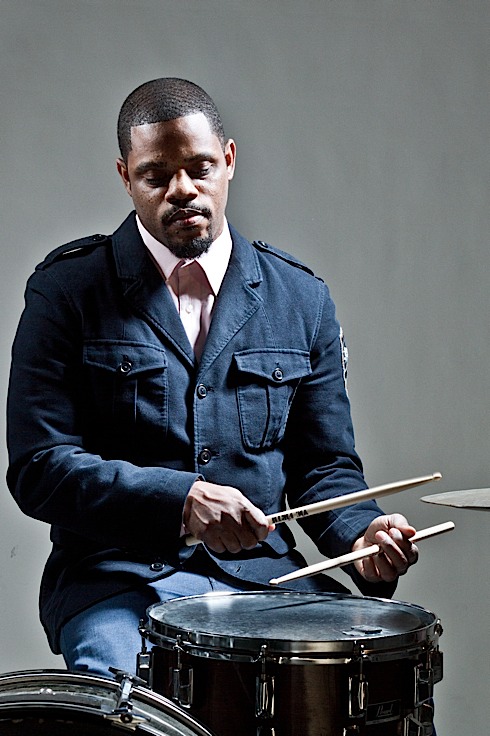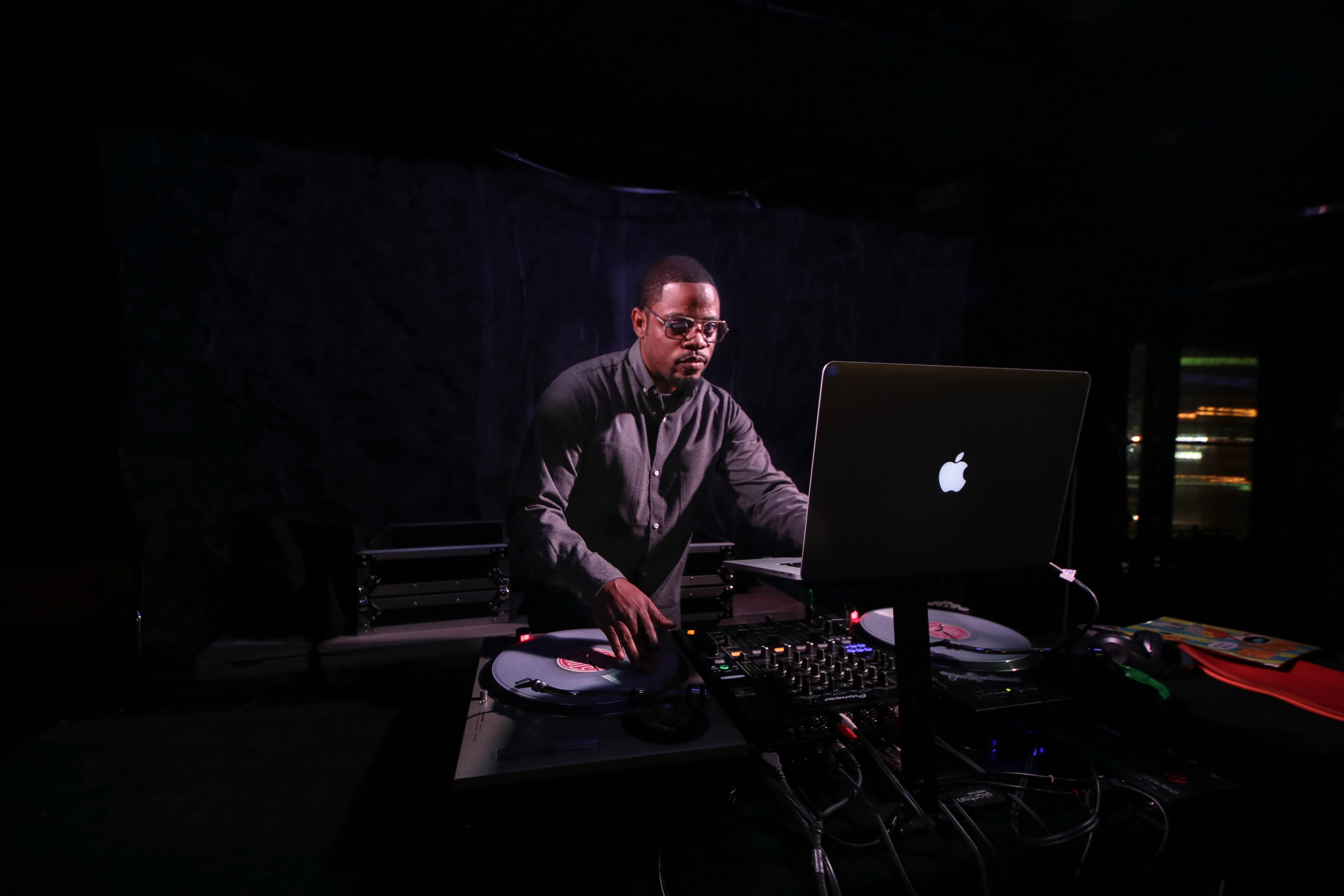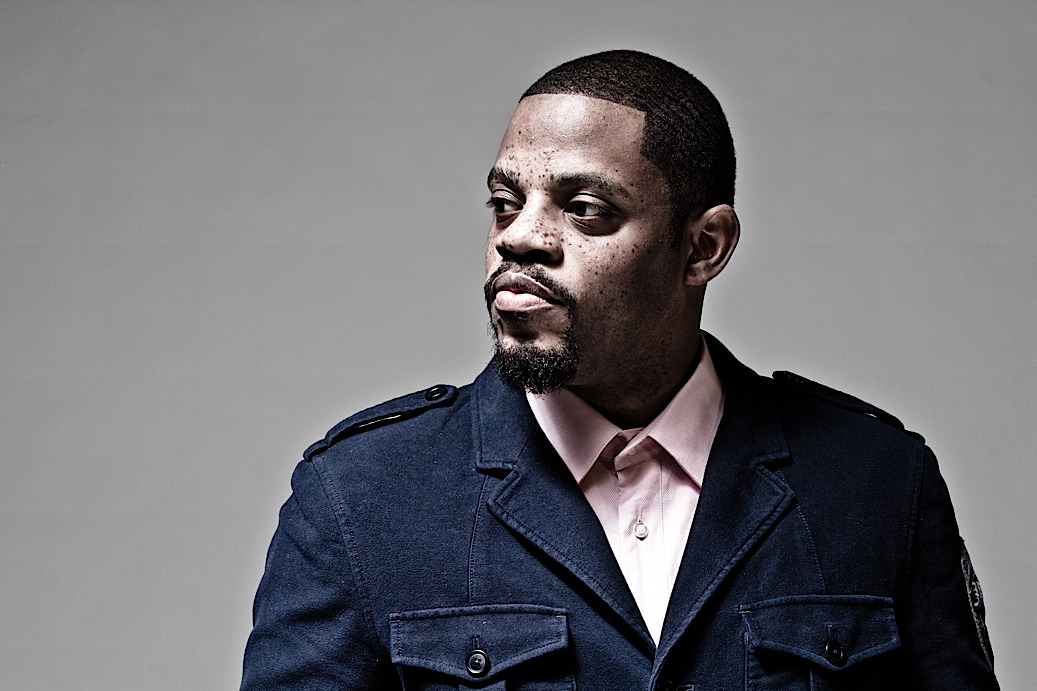← Back
Karriem Riggins, Drummer / Producer
Interview, 29 January 2015
Back in 1994, nineteen-year-old drummer Karriem Riggins left his native Detroit for what was supposed to be a temporary gig with jazz singer Betty Carter in New York City. But the young man ended up never using his return ticket back to Michigan.
Twenty years after deciding to try his wings in the entertainment capital of the world, Riggins is regarded as one of the world’s most prolific drummers and music producers of his generation.He is the well deserved bearer of an impressive resume including work with acclaimed artists such as Common, Paul McCartney, The Roots, the late great J-Dilla, Erykah Badu, Diana Krall, Oscar Peterson, Roy Hargrove, Mulgrew Miller and many others.
Like the majority of the modern day torchbearers of jazz, Riggins grew up around the time of the birth of hip-hop and has mastered the art of successfully switching lanes between the two genres throughout his career, establishing himself as a well respected figure in both camps.
With much of today’s music leaning more towards the electronic/computerized side, it is essential for modern day musicians to remember and study jazz as the foundation that it truly is, with its rich history and being the genre that once paved the way for modern pop music.We continue to laud the people who patiently take their time perfecting their craft, doing what they truly love, really well – and those who in the process are using it all to do good.
Therefore, it is our pleasure to present a conversation with a man who knows no musical boundaries and continues to stay relevant, both within a thriving art form and in one by many considered to be fading from broad relevance. Using the power of one to resuscitate the other.
We caught up with Karriem Riggins in his current hometown of Los Angeles to talk about his life in music, the state of modern jazz, giving up on comfort and familiarity to achieve his goals and the necessity to truly study the greats behind whatever art form you may be pursuing.
“I got a chance to be around a lot of the jazz masters, you know, hearing Elvin Jones live and all those important guys in jazz. I feel I got the chance to witness all that first hand”

– What were your earliest musical influences?
– My dad was a jazz musician who played organ and piano. He toured with Grant Green for a lot of years and together with a lot of the guys from Detroit back in the 60’s and 70’s, so I pretty much grew up around the music.
– And your dad got you into playing drums?
– Yes. Well, I actually started playing the drums and then I also went on to playing the trumpet in elementary and middle school, so those were basically my two main instruments. I played a lot of funk and jazz because a lot of the music Grant Green was playing at that time was jazz/funk-oriented stuff. Around middle school was when I really got into straight ahead jazz and I knew that that was one of the directions I wanted to pursue.
– Then you left for New York at the tender age of 19; what was the difference between New York in 1994 compared to the city that it is today, musically speaking?
– There’s a big difference. I mean now there are a lot of musicians there but back then there were a lot more things happening around the city. I got a chance to be around a lot of the jazz masters of that time, you know, hearing Elvin Jones live and all those important guys in jazz music and I feel I got the chance to witness all that first hand. A lot of those guys are passing away now, which is a real shame.
– For the ones that are still here, you know, I try to tell a lot of the younger dudes to go and see these guys, cause that’s the history. That was what was really important about New York for me in the early days.

“I get a lot of inspiration from making hip-hop as well from playing jazz, it goes hand in hand and one hand feeds the other”
– Do you feel like there is a surge in jazz music today in New York, with different movements trying to revive the culture in different ways?
– Definitely, I mean, that speaks volumes about this generation. You have a lot of music that is important to the youth like the hip-hop and a lot of groove oriented things and people are being passionate and curious about straight ahead jazz, yet you can tell the fusion is there and that’s a beautiful thing. That was what I was trying to push when I was around New York, a lot of guys were not receptive to it at the time but now it seems like that’s the standard.
– Many of the current artists in jazz today grew up on hip-hop; do you see that being reflected in their music?
– Oh it’s in it man, it’s who we are. It’s the way we express ourselves and it’s just a natural flow, like learning a second language.
– Speaking of that, when did you decide to go into producing beats and music for hip-hop?
– I was messing around with it really early on and started to get really serious about it around high school. Then I bought my first MPC 3000 (drum machine/sampler) in 1995 and that was when I started to begin putting it together professionally. I started learning how to sample and mix down songs and I really became a studio rat around that time.
– What was the big break in the beat making industry for you? Who did you pitch you first beat to that enabled you to get a foot in the door?
– Well I met Common back in 1994 when he asked me to come in and produce a song for him, but that was more from a live, instrumental standpoint. The actual first beat that I sold to an artist was a J-Dilla song called “The Clapper”.
– Did being a drummer and having a rhythmically oriented background set you up for making beats you think?
– Definitely. I get a lot of inspiration from making hip-hop as well from playing jazz, it goes hand in hand and one hand feeds the other, you know.

– What sacrifices did you have to make in order to make it and what did you have to put aside in order to achieve what you wanted to do in New York?
– Hmm… well I was alone in New York in the beginning, although I was with a lot of friends. I guess leaving my family behind. Like my mother, sister and grandmother, just being away from them. That was the only sacrifice really, but it’s important having family around. However, they were very supportive and that was the fuel that made me wanting to progress and grow.
– Being a veteran of the industry today, can you see a lot of the youth giving up on their dreams too soon when starting their journey?
– I see a problem with a lot of the young people going into music today, buying a music software or a piece of machinery that allows them to make a great song for radio standards and thinking they know it all. But that’s not it.
– On the other hand there are a lot of young musicians who are doing their proper research and being real students of the music. It’s like with most things really, you have the good and the bad aspects of getting into something you want to master. Our job is to keep pushing and create more awareness of learning music on a fundamental level.
– You live in Los Angeles now but you were back in Detroit for a bit working on different projects a few years back, how is Detroit as a music city today?
– It’s beautiful man, I love Detroit. I just get so much inspiration there and in fact I will go back soon to work on a project. Many great musicians live there now and it’s filled with the spirit of what was going on back in the day with Motown and what not.
– Speaking of Detroit, you helped finish your friend J-Dilla’s (the legendary music producer from Detroit who passed away from lupus at the early age of 32) album “The Shining” after his passing in 2006, can you tell us about your emotions going through that process?
– It was a hard thing to complete because I knew that he was very ill. He asked me to mix and complete the album, which was about 75% done at the time of his passing. When he asked me I did not really imagine him not being there to complete it so it was a really hard thing to do, you know, getting over the death of a friend.
– But the music was there and the music is classic. I wanted to make and complete it the way I thought he would have wanted. It was a rough thing to do but I feel in the end that it was a great project, a lot of people received it well and I think it’s one of those albums that people will go back and revisit.
– You’ve said before that J-Dilla didn’t overthink things, was that the hallmark of his success?
– I really do man and I think that he has the spirit of some of the old jazz musicians and composers. Never overthink it. That was totally him and that was what surprised me being in the studio with him.
“Our job is to keep pushing and create more awareness of learning music on a fundamental level”

– You put out your latest solo album “Alone Together” on the independent record label Stones Throw Records, who are notorious for allowing their artists maximum freedom in the creative process. What is it that’s so special about that particular record label?
– They really understand. That’s the perfect thing to say about them, they really understand. Peanut Butter Wolf (DJ/Producer, founder of Stones Throw Records) has a great ear for music and he knows music. He has a great record collection and is a big student of the art form as well, and when you work with someone like that it makes it so much easier. It’s not just about checks and balances, well of course to some extent, but the music always comes first.
– What was your favorite album of 2014?
– Hmm, that’s a tough question. I’m a crate digger so I look for the old records really… Is it safe to say that D’Angelo’s album (Black Messiah, RCA Records) came out in 2014?
– Yes, it’s safe to say.
– Well ok, his album was great. It’s phenomenal.
– Any last words for aspiring beat makers or musicians out there trying to make it?
– Yes, keep digging, keep practicing and stay a student of the music. That would be the only way to take music forward and to be an innovator. That’s it, those are my words of wisdom.
For more info please visit:
www.karriemriggins.com & www.stonesthrow.com/karriemriggins